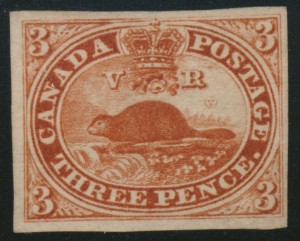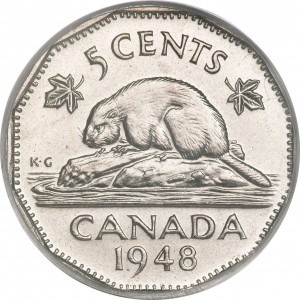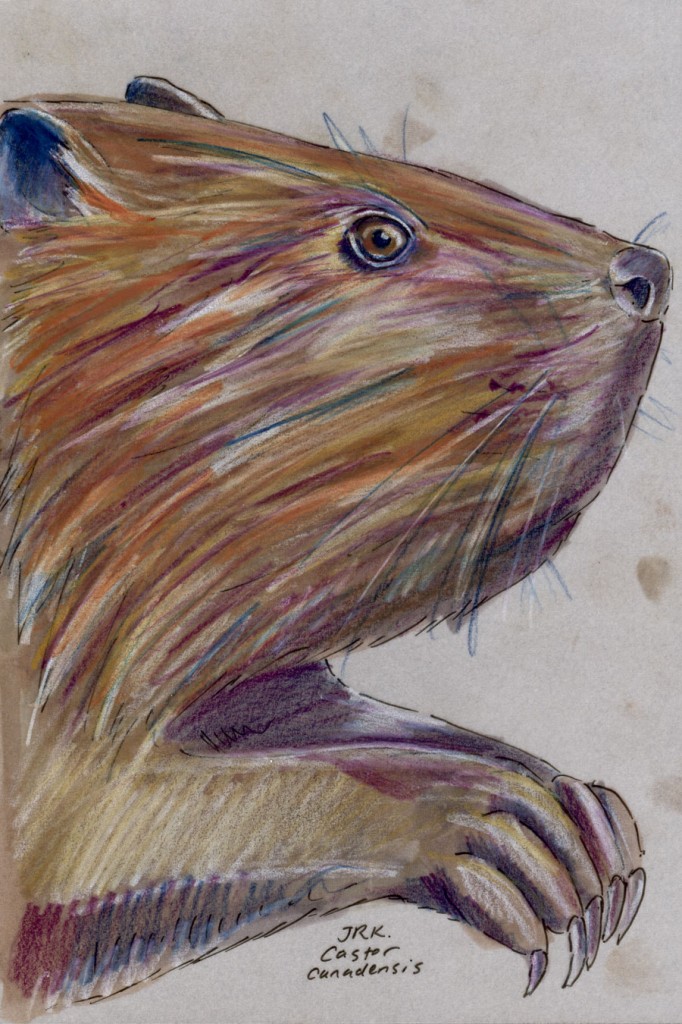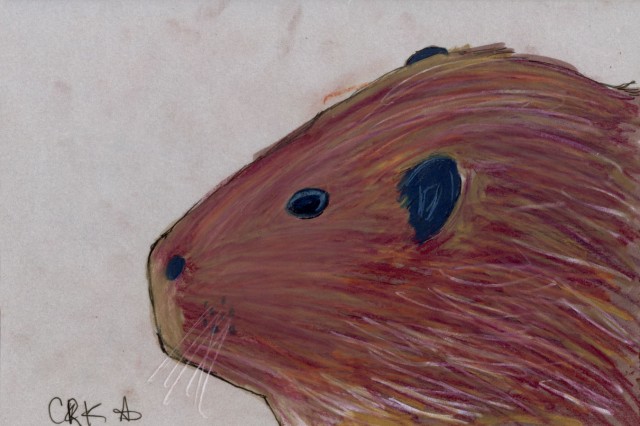Facebook Friends: Canada: Canadian Beaver (Castor canadensis)
 Today let’s continue visiting mammals that live near people who like the Daily Mammal on Facebook. This Canadian beaver represents, of course, Canada. It’s also (and probably more commonly) known as the North American beaver, but we’ll go with the Canadacentric name for our purposes here.
Today let’s continue visiting mammals that live near people who like the Daily Mammal on Facebook. This Canadian beaver represents, of course, Canada. It’s also (and probably more commonly) known as the North American beaver, but we’ll go with the Canadacentric name for our purposes here.
The Canadian beaver is the largest rodent in North America, weighing up to 70 pounds. It lives almost everywhere on the continent, from Canada to Mexico, except parts of Florida, the deserts of the southwestern U.S. and Mexico, and the arctic tundra. For a while, the beaver population plummeted and beavers disappeared from much of the continent as the fur trade relentlessly devoured beaver pelts. Thanks to conservation efforts beginning in the 1920s the Canadian beaver has returned to abundance across its historic range. It’s also found in Finland, Russia, and Argentina, where it was introduced in the 20th century. In Argentina, the 25 mating pairs that were released in 1946 have become some 50,000 beavers today.
fur trade relentlessly devoured beaver pelts. Thanks to conservation efforts beginning in the 1920s the Canadian beaver has returned to abundance across its historic range. It’s also found in Finland, Russia, and Argentina, where it was introduced in the 20th century. In Argentina, the 25 mating pairs that were released in 1946 have become some 50,000 beavers today.
Here is a charming silent movie from 1928 featuring conservationists Archibald Belaney (who went by Grey Owl) and his wife Angele Egwuna romping with their tame beavers in Canada. Grey Owl’s passion for beaver conservation helped draw attention to the beavers’ dire situation.
(Beaver People by ONFB , National Film Board of Canada)
The beaver is one of Canada’s national symbols. It was on the first Canadian postage stamp, which is known as the three-penny beaver, and has been on the back of the Canadian nickel off and on since 1937 (both pictured above). Unfortunately, not every Canadian loves the beaver. In 2011, Nicole Eaton, a Canadian senator, proposed replacing the beaver—which she called a “dentally defective rat”—with the polar bear as the official Canadian animal.
Each adult beaver cuts down about 215 trees a year, on average. The dams and lodges they build have a marked effect on the environment. The ponds created when beavers dam a creek store precipitation and add fresh water to the ecosystem, enabling a greater diversity of plant and animal life. And beaver dams have been shown to break down pollutants, filtering the water as it passes through. For more information on how beavers change the environment, see “The beaver’s new brand: eco-saviour” from the Globe and Mail, “Leave it to Beavers” from the Atlantic, or “Beavers and the Environment” (PDF) from MartinezBeavers.org.
My daughter Coco, who is 14, drew a Canadian beaver, too, and here it is.



This is exclusive footage of the elusive three legged beaver.
http://youtu.be/RE_O9pVUtoc